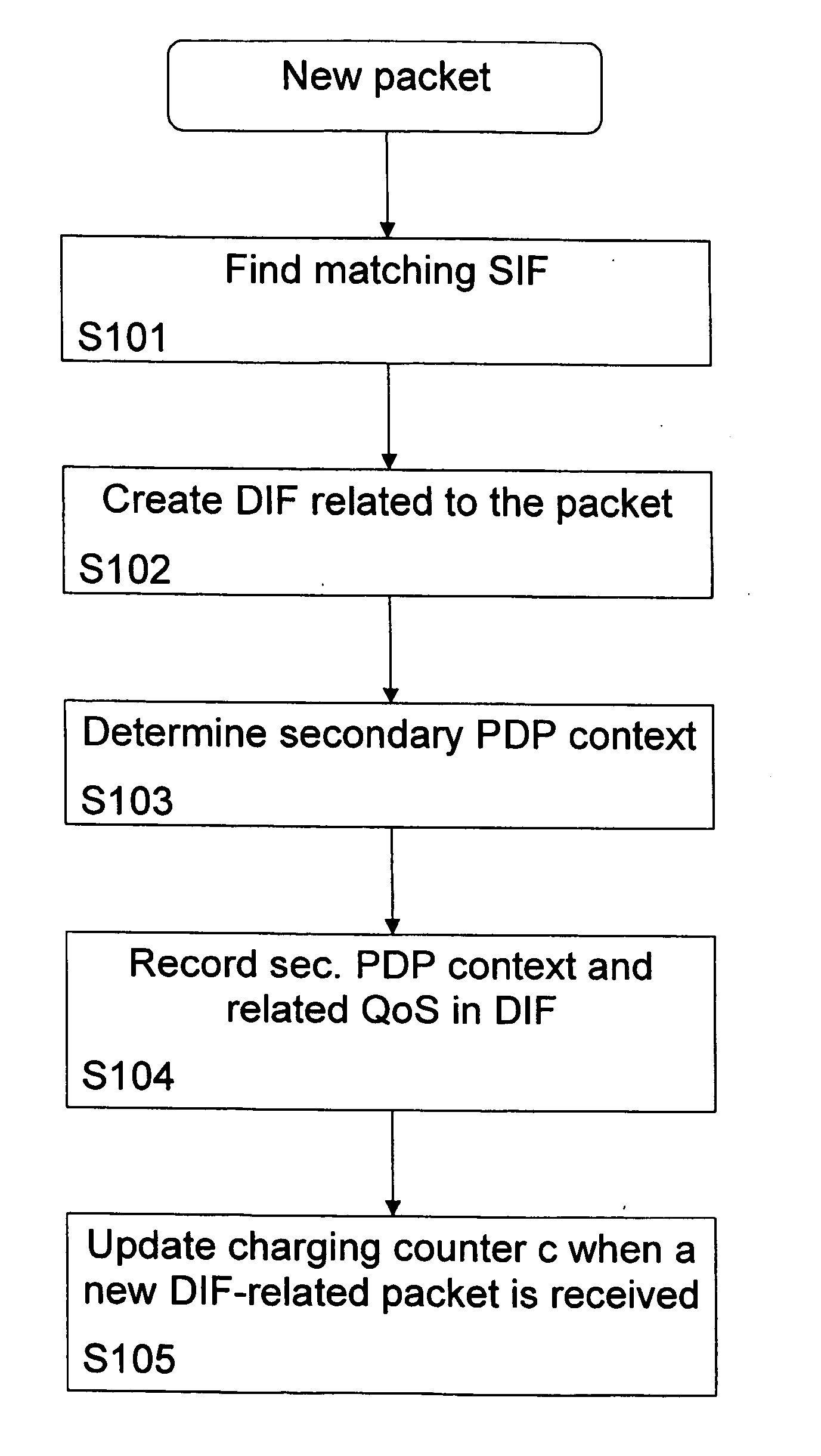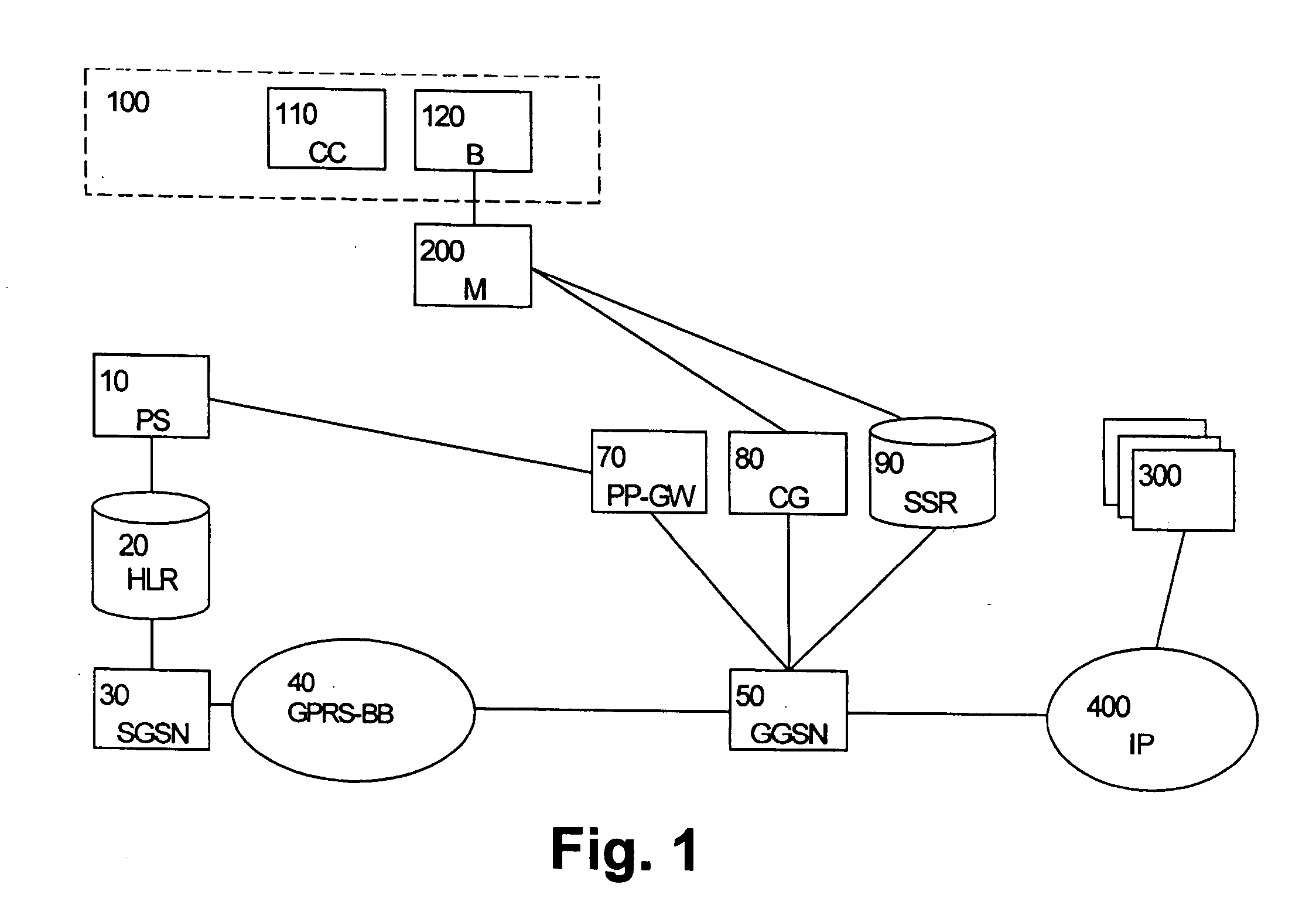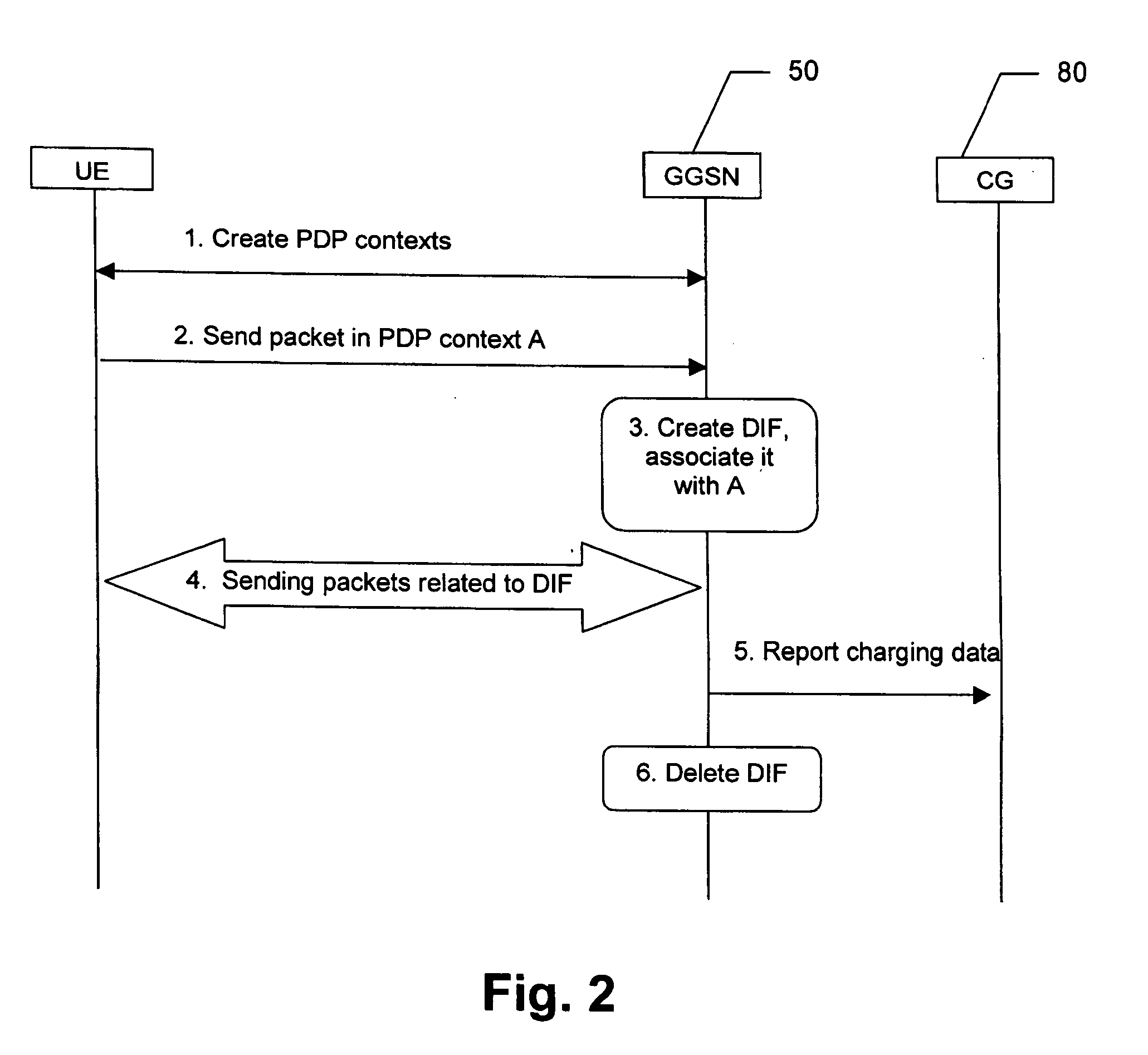Context-based processing of data flows
a data flow and context-based technology, applied in the field of context-based processing of data flows, can solve the problems of poor user experience, inflexible resource allocation, streaming video or audio impose constraints, etc., and achieve the effect of simplifying the implementation of user equipment and concerned network nodes
- Summary
- Abstract
- Description
- Claims
- Application Information
AI Technical Summary
Benefits of technology
Problems solved by technology
Method used
Image
Examples
Embodiment Construction
[0041] In the following, the preferred embodiment of the present invention will be described with respect to an intelligent content delivery (ICD) architecture for a GPRS system as shown in FIG. 1.
[0042] The idea of the ICD architecture is to analyze traffic flowing from the end user's terminal to the Internet. According to the preferred embodiment, the architecture comprises a traffic analyzing element or unit which implements this functionality in a GPRS support node, e.g., a GGSN 50. Additionally, a prepaid gateway 70, a charging gateway 80 and a service and subscriber repository element 90 are provided to fully implement the functionality. The purpose of the traffic analyzing unit is to enable access to third party content services 300 containing digital content and applications for end users. Typically, no difference may be made between internal and external applications. Standard network elements make the framework that the rest of the architecture has been built on. Shortly ...
PUM
 Login to View More
Login to View More Abstract
Description
Claims
Application Information
 Login to View More
Login to View More - R&D
- Intellectual Property
- Life Sciences
- Materials
- Tech Scout
- Unparalleled Data Quality
- Higher Quality Content
- 60% Fewer Hallucinations
Browse by: Latest US Patents, China's latest patents, Technical Efficacy Thesaurus, Application Domain, Technology Topic, Popular Technical Reports.
© 2025 PatSnap. All rights reserved.Legal|Privacy policy|Modern Slavery Act Transparency Statement|Sitemap|About US| Contact US: help@patsnap.com



